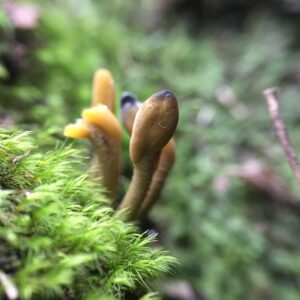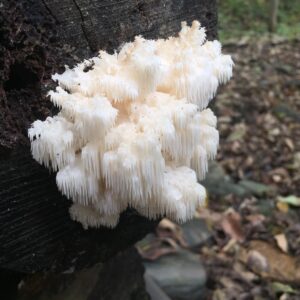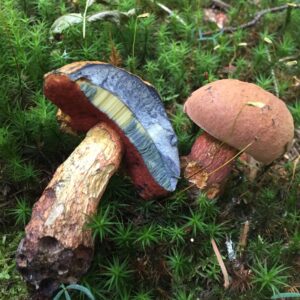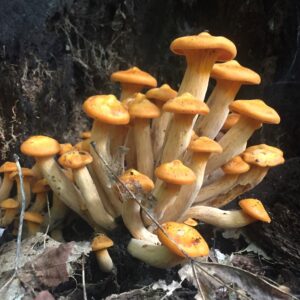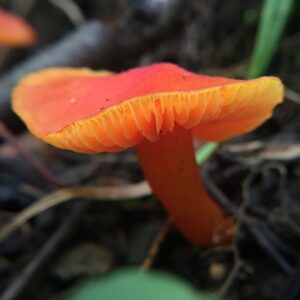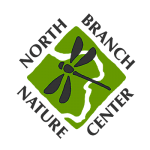The Vermont MycoFlora Project
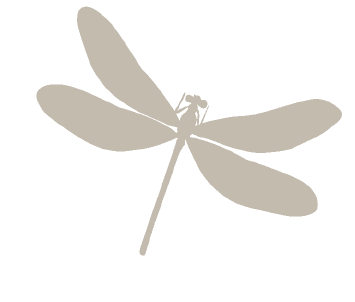
Fungi play some of the most critical and unusual ecological functions in our environment. Among these many roles, fungi are responsible for decomposing ‘challenging’ molecules and cycling nutrients throughout ecosystems. Their role in maintaining healthy forest ecosystems cannot be overstated—fungi provide vital nutrients to over 95% of earth's vascular plant species through coevolved mycorrhizal relationships.
Despite our growing understanding of fungi’s significance, we have scientifically defined and described only about 5% of the fungi estimated to be present on earth.
Clearly, we have some catching up to do—and we could use your help!
The Fungi of Vermont Program is a Community Science-driven initiative to document and further study the diverse macrofungi present within the different bioregions of Vermont. Through this data we hope to better understand the breadth of species at work within the Green Mountain State.
The State of Vermont Fungal Scientific Advisory Group (FSAG) and other contributing mycologists and researchers are using this data to 1) develop our understanding of fungal diversity within the state, 2) document rare macrofungi, and 3) inform conservation policy through the inclusion of fungal indicators in assessments of ecosystem health. This information will also contribute to regional databases as well as the collective understanding of fungi globally.
Get Involved!
To contribute to this statewide project all you need is a camera or smartphone and access to the internet. From there, you can choose the level at which you would like to be involved. To get started, follow the instructions below! If you have any questions please feel free to reach out to NBNC Teacher-Naturalist Dave Muska.
Click each tab to expand
- Create an account with iNaturalist. This is a free, worldwide platform to contribute and organize observations of any organism, and is used by amateurs and professionals alike. Our program uses iNaturalist to house its fungal observations. We recommend downloading the iNaturalist app to your smartphone as well.
- Join the Fungi of Vermont Program Mailing List. This is an important way for us to communicate with you about your observations and upcoming events related to the Mycoflora Project.
- Visit and Join the Fungi of Vermont iNaturalist Project. This is the repository of all macrofungal iNaturalist observations documented within Vermont. All of your submissions to iNaturalist will automatically be added to this project. Click "Join" at the top right of the project page, and select "Yes, for any of my observations" under the section for "Trust this project with hidden coordinates?" This will ensure that project administrators will be able to see the coordinates of your observations.
Continue to the next tab to learn how to begin contributing to the project!
Now it's time to collect and submit some mushroom observations!
Step 1: Take Photos
Find a mushroom and take a set of photographs. You will need several clear and sharp images of the following parts of the mushroom in order for the observation to be identifiable and verifiable:
- The Entire Mushroom (Fruiting Body) in its habitat and if possible including surrounding vegetation/plants and trees.
- The Cap- This is to capture any surface features such as scales, hairs, and tissue, etc.
- The Spore Surface (Gills, Pores, Teeth) - In most fleshy fungi the gills and pores are located on the underside of the cap. Pay special attention to the area where the gills/pores meet the stem. This will provide evidence of the ‘attachment’ style of gills.
- The Stem (Top to Bottom)- We are looking for features on the surface of the stem such as a ring/annulus or patterns on the stem like webbing, reticulation, hairs, etc. This may also include features of the base of the stem such as a cup/volva. This may be done in one or more photos depending on the size of the stem.
Step 2: Upload Photos to iNaturalist
Photos may be taken and uploaded directly into the iNaturalist app from the field using your smartphone, or uploaded at a later date on a desktop if using a camera. Once your observation is uploaded, it will be automatically added to the ‘Fungi of Vermont' iNaturalist project.
If you are new to iNaturalist, NBNC has a couple of good tutorials to assist you with uploading observations.
- Uploading iNaturalist observations with a mobile device
- Uploading iNaturalist observations on a desktop
iNaturalist also has a collection of Video Tutorials to help new users.
That's it! This is the most basic way to contribute to the Fungi of Vermont Program. But if you're ready for more, see the next tab.
In the description field in your iNaturalist observation, please include as much information as you can about your mushroom, such as the following:
- Habitat: A detailed description of the conditions in which the mushroom is growing. For instance, "growing on an elm tree in a group or bunch." Or, "growing from the ground, scattered, in a mixed hardwood forest near sugar maple, yellow birch, and white pine."
- Spore Print: Make a spore print of your mushroom cap and describe the color of the spores. Better yet, add a photo of the spore print to your observations.
- Measurements: Include measurements of the cap diameter, stem length, stem width.
- Unique characteristics: Note features such as bruising, exuding latex, distinct smell, texture, reactions with reagents such as KOH, Ammonia, etc.
In many cases, this sort of additional information is critical to confidently identify fungi. In some cases, new fungi are still being discovered and described thanks to this sort of information. The more detail you're able to provide, the better!
Once you're comfortable with this process, you can opt to contribute to the Fungi of Vermont Program at the highest level by collecting voucher specimens—see next tab.
Once you've submitted your detailed observation to iNaturalist, you can follow these next steps for preservation and storage if you are interested in contributing a voucher specimen for later research and genetic sequencing.
- Complete a Collection Sheet. Label your specimen using the Permanent Observation Number. This number is the last series of digits in the url of your iNaturalist observation. For example, if the URL of your observation is inaturalist.org/observations/125057737, then the Permanent Observation Number is "125057737."
- Dry Specimen immediately in a food dehydrator between 100-120℉ until entirely dry/brittle. For large fleshy mushrooms it may be necessary to cut the specimen into slices for complete and expedited drying. If you plan to make a spore print, you’ll need to collect two specimens: one for the spore print and a separate one for the voucher.
- Storage
- Place the dried specimen and collection sheet in a resealable plastic bag. We recommended that a desiccant packet be added in the bag to prevent additional moisture. NBNC can provide you with desiccant packets.
- Label the outside of your bag with the Permanent Observation Number and the collection date, collector’s name, species name, and collection location.
- Temporary Storage: Choose a location and system of temporary storage of specimens at your home. This could include plastic totes or airtight buckets stored in a cool and dry location. Voucher specimens are personally stored until requested by researchers, mycologists, or to be included in the state of Vermont’s fungarium collection.
- Record the specimen as ‘Vouchered Specimen’ in the 1st line of the iNaturalist Observation Notes.
"Knowing that you love the earth changes you, activates you to defend and protect and celebrate.
But when you feel that the earth loves you in return, that feeling transforms the relationship
from a one-way street into a sacred bond."
— Robin Wall Kimmerer, Braiding Sweetgrass


